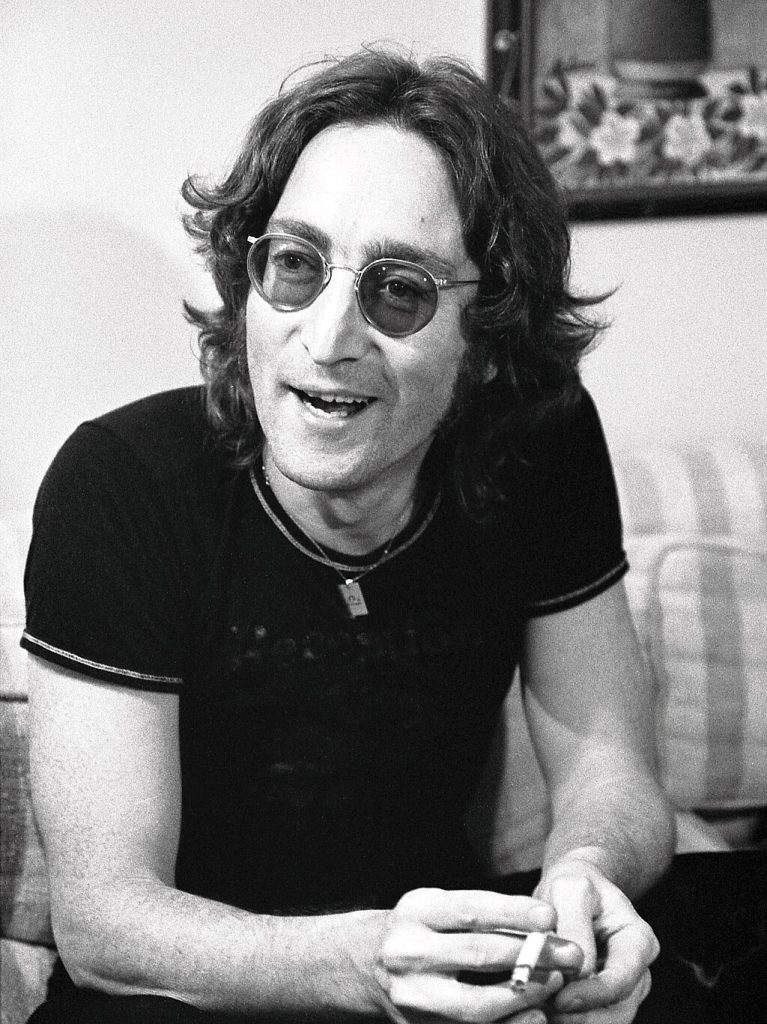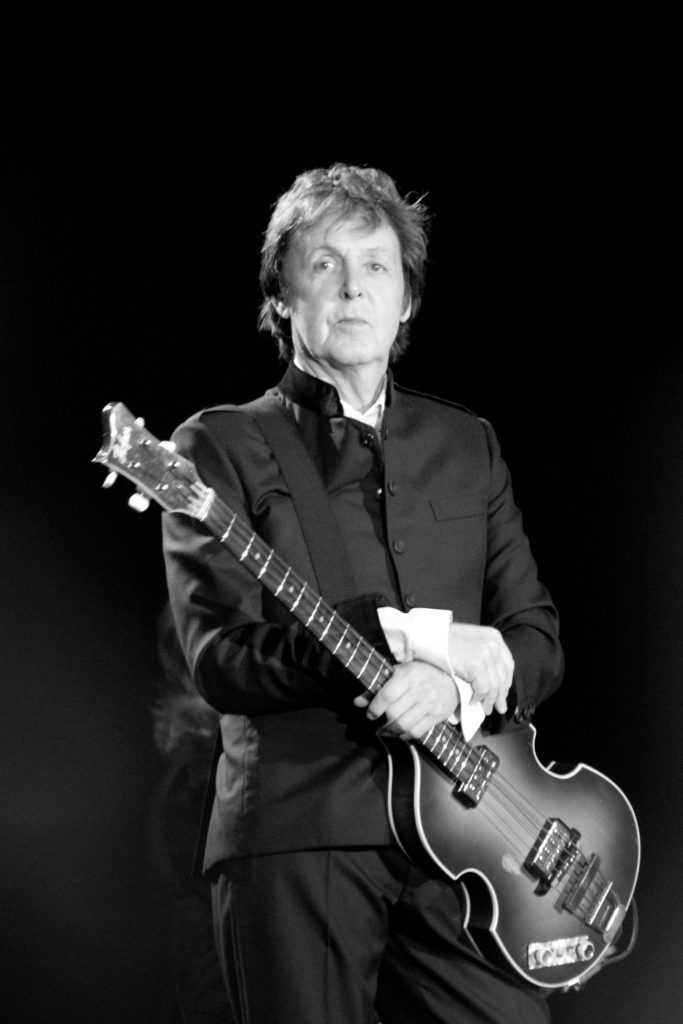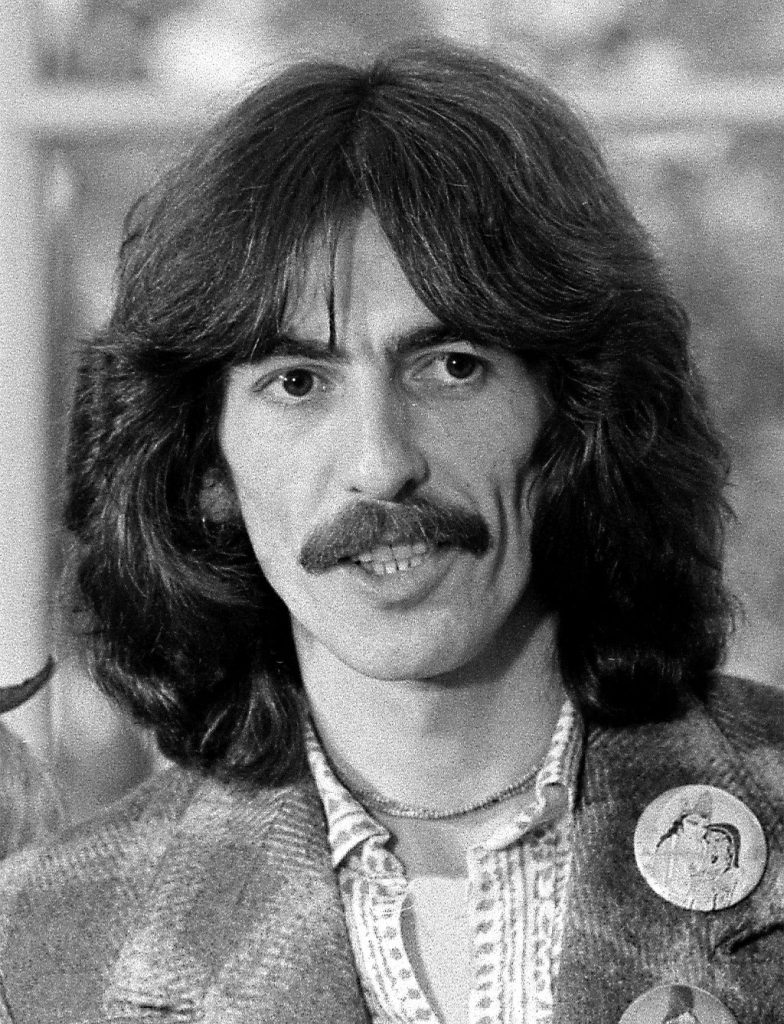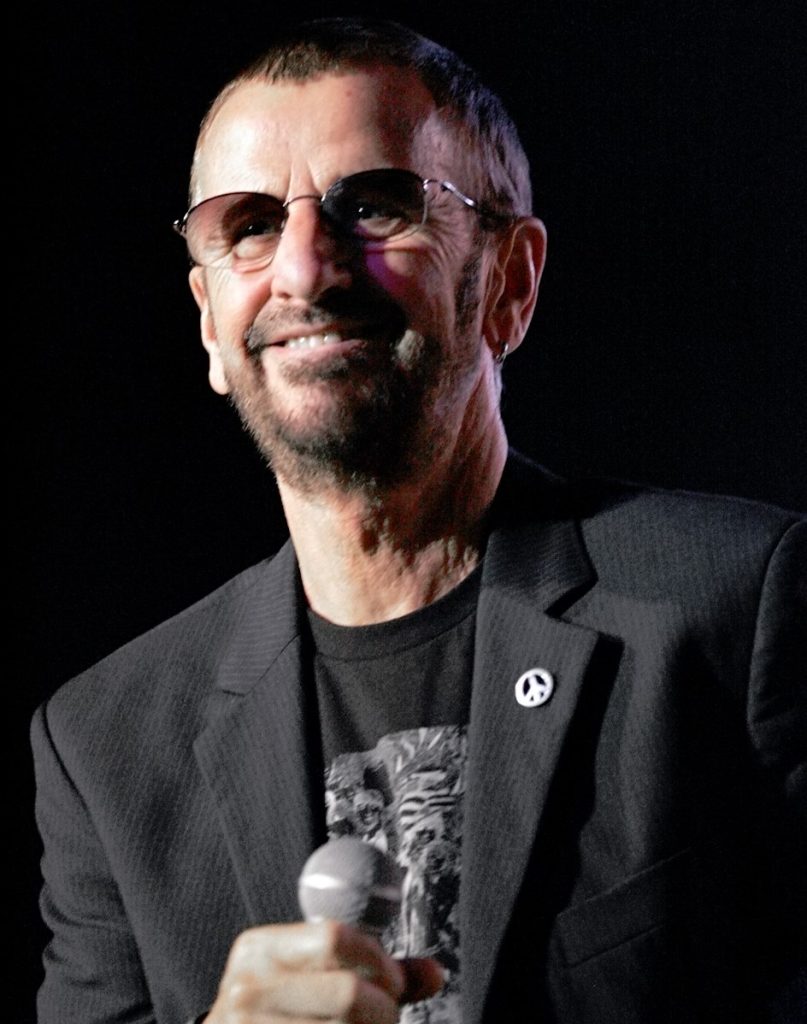The Beatles’ story has been told thousands of times. This bend, often hailed as the greatest band in music history, has left an indelible mark on the world with its groundbreaking contributions to rock and pop. Comprising John Lennon, Paul McCartney, George Harrison, and Ringo Starr, the Beatles’ members reshaped the music scene in the 1960s and beyond. In this article, we delve into the Beatles’ story, exploring the fascinating journey of these four talented musicians, their rise to fame, their most popular hits, and the events that led to their eventual break-up.
🛒 (shopping cart) symbol represents affiliate link. Affiliate links on our website track purchases or visits from our site, earning us a commission. This is how Music Nonstop Today finances itself.
Who Are The Beatles?
Legendary British rock band from England that renovated popular music in the 1960s. The Beatles’ story began with their forming in 1960. The original lineup included John Lennon, Paul McCartney, George Harrison, and Ringo Starr.
The band’s journey began in 1957 when John Lennon formed The Quarrymen, later joined by Paul McCartney and George Harrison. The addition of Ringo Starr in 1962 completed the classic lineup.
The Beatles released their first single, “Love Me Do,” in 1962. Influenced by American rock ‘n’ roll icons like Elvis Presley and Chuck Berry, the early Beatles created a unique sound that propelled them to global stardom.
The Beatles’ Members
The Beatles’ members, John Lennon, Paul McCartney, George Harrison, and Ringo Starr, each brought unique talents and personalities that combined to create the band’s magic.
Let’s dive into these incredible musicians’ detailed profiles, backgrounds, roles in the band, and contributions to music history.

John Lennon: The Visionary
One of the most famous Beatles’ names was born in Liverpool on October 9, 1940. As the Beatles lead singer and rhythm guitarist, John’s edgy voice and innovative songwriting helped define the band’s sound.
He played a significant role in shaping the band’s rebellious image and penned many of their early hits, including “Help!” and “All You Need Is Love.”
Paul McCartney: The Melodic Genius
Born in Liverpool on June 18, 1942, he was known for his incredible versatility and melodic instincts. As a Beatles’ lead singer and bassist, Paul wrote and sang many of the band’s most beloved songs, such as “Yesterday” and “Hey Jude.” His ability to play multiple instruments, including piano and guitar, further highlighted his musical genius. Paul’s partnership with John Lennon in songwriting produced some of the greatest hits in music history.


George Harrison: The Quiet Innovator
Born on February 25, 1943, in Liverpool, he was the lead guitarist for the Beatles. Known for his introspective nature and spiritual depth, George contributed significantly to the band’s sound with his innovative guitar work and unique songwriting. His notable contributions include “Here Comes the Sun” and “While My Guitar Gently Weeps.” George’s interest in Indian music and culture also introduced new sounds and instruments to the Beatles’ music, enriching their sonic palette.
Ringo Starr: The Beat Master
Born as Richard Starkey on July 7, 1940, in Liverpool, he was the Beatles’ drummer. His steady and reliable drumming provided the backbone for the band’s music.
Ringo also sang lead on several tracks, including “Yellow Submarine” and “With a Little Help from My Friends.” His approachable personality and distinctive drumming style made him essential to the Beatles’ charm.

What Instruments Did The Beatles Play?
Each member of the Beatles played multiple instruments, adding to their versatility and creativity. John Lennon primarily played rhythm guitar and occasionally keyboards. Paul McCartney was mainly on bass guitar but also played piano, guitar, and drums on some recordings. George Harrison’s primary instrument was lead guitar, but he also played sitar and other exotic instruments. Ringo Starr was the drummer but also contributed vocals and occasionally played other percussion instruments.
Early Years and Rise to Fame
The Beatles’ story is one of humble beginnings, immense talent, and a meteoric rise to international fame. This chapter chronicles the band’s journey from their formation in Liverpool to their first major successes, highlighting key events and early gigs that shaped their path to becoming the world’s most famous rock band.
The Formation in Liverpool
The early Beatles’ story began in the late 1950s in Liverpool, a vibrant port city in England. John Lennon, born on October 9, 1940, formed a skiffle group called The Quarrymen in 1957. At a church fete in July 1957, he met Paul McCartney, born on June 18, 1942. John was impressed by Paul’s musical skills and invited him to join the group. Paul soon brought along his schoolmate, George Harrison, born on February 25, 1943. George’s exceptional guitar skills earned him a spot in the band despite being only 15 years old.
They gained early fame performing at Liverpool’s Cavern Club and honing their skills in Hamburg, Germany (source: Wikipedia; The Beatles in Hamburg)
How Old Were The Beatles When They Started?
When the core of the Beatles formed, John Lennon was 16, Paul McCartney was 15, and George Harrison was just 14. Their youth and passion for music set the stage for a historic journey.
Early Gigs and the Hamburg Experience
The early Beatles played numerous gigs around Liverpool, honing their craft at local venues like The Cavern Club. Their big break came in 1960 when they secured a residency in Hamburg, Germany. This period was crucial for the band, as they played long hours at clubs like the Indra Club and the Kaiserkeller, refining their performance skills and developing a tight, energetic sound. It was in Hamburg that they adopted the name “The Beatles” and welcomed Ringo Starr, born Richard Starkey on July 7, 1940, as their drummer in 1962, completing the classic lineup.
The Beatles’ First Album and Major Breakthrough
Returning to Liverpool, the Beatles built a loyal following. Their big break came when they met Brian Epstein, a local record store owner who became their manager. Epstein secured them an audition with producer George Martin at EMI’s Abbey Road Studios. Impressed by their talent, Martin signed them to a recording contract.
In October 1962, the Beatles released their first single, “Love Me Do,” which reached number 17 on the UK charts. Their first album, “Please Please Me,” was released on March 22, 1963. Recorded in just one day, the album was a massive success, topping the UK charts for 30 weeks. This marked the beginning of Beatlemania.
Rise to International Fame
The Beatles’ infectious energy, catchy melodies, and charismatic performances quickly won them fans across the UK. Their appearance on “The Ed Sullivan Show” in February 1964 catapulted them to fame in the United States, drawing an audience of over 70 million viewers. This performance marked the beginning of their international domination.
I don’t mean to sound harsh, but I think that using the TV as a channel to promote their music to a broad audience in the 60s, including the instructed dramatic screaming of young and beautiful girls in the audience during their performance, which could be watched by hundreds of thousands of people on TV sets, played a crucial role in the popularization of the Beatles.
What Was The Beatles’ First Album?
The Beatles’ first album, “Please Please Me,” 🛒 was released on March 22, 1963. Recorded in just one day at EMI’s Abbey Road Studios, this album marked the beginning of Beatlemania and showcased the band’s raw energy and songwriting prowess.
Timeline and Key Beatles’ Albums
The Beatles released a total of 13 studio albums in the UK. Each album marked a different phase of their evolution, from their early rock and roll roots to their later experimental sounds.
- “Please Please Me” (1963) 🛒 – The debut album featured hits like “Love Me Do” and “I Saw Her Standing There.” Its success in the UK set the stage for the Beatles’ meteoric rise.
- “With the Beatles” (1963) 🛒 – Released later in 1963, this album included popular tracks such as “All My Loving” and “Roll Over Beethoven.” It solidified the band’s popularity.
- “A Hard Day’s Night” (1964) – The soundtrack to their first film, this album featured iconic songs like “A Hard Day’s Night” and “Can’t Buy Me Love.” It captured the peak of Beatlemania.
- “Beatles for Sale” (1964) – This album showed a more introspective side with songs like “I’m a Loser” and “Eight Days a Week.”
- “Help!” (1965) – Featuring the title track “Help!” and “Ticket to Ride,” this album also included the timeless “Yesterday,” which is often considered the Beatles’ most famous song.
- “Rubber Soul” (1965) – Marking a turning point in their music, “Rubber Soul” included tracks like “Norwegian Wood” and “In My Life.” It showcased the band’s growing maturity and experimentation.
- “Revolver” (1966) – Known for its innovative sound, “Revolver” featured classics like “Eleanor Rigby” and “Tomorrow Never Knows.”
- “Sgt. Pepper’s Lonely Hearts Club Band” (1967) – This groundbreaking album is often hailed as one of the greatest of all time, featuring tracks like “Lucy in the Sky with Diamonds” and “A Day in the Life.”
- “The Beatles” (White Album) (1968) 🛒 – A double album with a diverse range of songs, including “While My Guitar Gently Weeps” and “Blackbird.” It reflected the band’s creative direction.
- “Yellow Submarine” (1969) 🛒 – The soundtrack to their animated film included the hit “Yellow Submarine” and showcased their playful side.
- “Abbey Road” (1969) 🛒 – Known for its album cover, this album featured classics like “Come Together” and “Here Comes the Sun.” It was one of their last major recording sessions.
- “Let It Be” (1970) 🛒 – Released after the band had already broken up, “Let It Be” included the title track and “The Long and Winding Road.” However, “Abbey Road” is often considered the last studio album the band completed together.
What Is The Beatles’ Most Famous Song?
While picking just one is hard, “Yesterday” is often cited as the Beatles’ most famous song. Its haunting melody and poignant lyrics have made it a timeless classic, covered by numerous artists over the years (Katy Perry – Yesterday (Tribute to The Beatles, 2014).
What Genre are The Beatles?
The Beatles are often associated with the rock genre, but their musical style evolved significantly over time, encompassing a wide range of genres. From their early rock and roll beginnings to their later experimental sounds, the Beatles’ versatility and innovation influenced popular music profoundly.
Early Rock and Roll Influences
In the beginning, the Beatles were heavily influenced by American rock and roll artists like Elvis Presley, Chuck Berry, and Buddy Holly. Their early hits, such as “Twist and Shout” and “Please Please Me,” showcased a raw energy and youthful exuberance typical of the rock and roll genre. In this period, they also featured elements of skiffle, a popular British music genre-blending jazz, blues, and folk.
Evolving Genres and Styles
As the Beatles’ career progressed, they began to experiment with different genres and styles:
- Folk and Acoustic
Albums like “Rubber Soul” and songs such as “Norwegian Wood” showcased a folk-influenced, acoustic sound. This period is marked by a shift towards more introspective and sophisticated songwriting. - Psychedelic Rock
“Revolver” and “Sgt. Pepper’s Lonely Hearts Club Band” epitomized the Beatles’ foray into psychedelic rock. Tracks like “Lucy in the Sky with Diamonds” and “Tomorrow Never Knows” featured innovative studio techniques, surreal lyrics, and exotic instrumentation. - Baroque Pop and Classical
The Beatles incorporated classical elements, using string arrangements and complex harmonies in songs like “Eleanor Rigby” and “A Day in the Life.” This fusion of rock with classical music added a new dimension to their sound. - Experimental and Eclectic
The “White Album” and “Abbey Road” highlighted the Beatles’ willingness to experiment with various genres, including blues (“Yer Blues”), country (“Rocky Raccoon”), and progressive rock (“I Want You (She’s So Heavy)”).
Influence on Popular Music
The Beatles’ genre-spanning music had a monumental impact on popular music. They pushed the boundaries of what rock music could be, incorporating diverse influences and pioneering new recording techniques. Their ability to blend different styles seamlessly has inspired countless artists across multiple genres.
How Long Were The Beatles Together?
The Beatles were together for eight years, from 1962 to 1970. However, their influence and the music they created during that time remain timeless. The Beatles’ story is unparalleled creativity, innovation, and cultural impact, making their brief but intense career one of the most celebrated in music history.
The Beatles were officially together from 1962 to 1970, a span of eight years, during which they transformed the music landscape.
1962: The Breakthrough
- October 1962: Released their first single, “Love Me Do,” which reached number 17 on the UK charts. This marked the beginning of their professional recording career.
1963: Beatlemania Begins
- March 1963: Released their debut album, “Please Please Me,” which topped the UK charts and stayed there for 30 weeks.
- 1963: As their popularity surged with hit singles like “She Loves You” and “I Want to Hold Your Hand,” people coined the term “Beatlemania.”
1964: International Stardom
- February 1964: The Beatles appeared on “The Ed Sullivan Show,” drawing over 70 million viewers and launching their fame in the United States.
- July 1964: Released the film and accompanying album “A Hard Day’s Night,” further cementing their status as global superstars.
1965: Musical Evolution
- August 1965: Released “Help!” album featuring the timeless song “Yesterday.”
- December 1965: “Rubber Soul” was released, showcasing their evolving musical complexity and maturity.
1966: Pioneering Sounds
- August 1966: The “Revolver” album showcased innovative studio techniques and diverse musical styles.
- August 1966: The Beatles performed their last official concert at Candlestick Park in San Francisco, choosing to focus on studio work afterward.
1967: Peak of Creativity
- June 1967: Released “Sgt. Pepper’s Lonely Hearts Club Band,” often hailed as one of the greatest albums ever.
- August 1967: The death of their manager, Brian Epstein, marked a turning point in their career.
1968: Experimentation and Diversity
- November 1968: Released “The Beatles” (White Album), a double album featuring a variety of musical styles and showcasing the individual talents of each member.
1969: Final Collaborations
- September 1969: Released “Abbey Road,” known for its iconic cover and tracks like “Come Together” and “Here Comes the Sun.”
- January 1969: They recorded the “Let It Be” sessions as their final album but released it after their breakup in 1970.
1970: The End of an Era
- April 1970: Paul McCartney announced his departure from the band, effectively signaling the end of The Beatles.
- May 1970: The “Let It Be” album included the title track and “The Long and Winding Road.”
After the breakup, each member pursued successful solo careers and other projects. Despite their relatively short time together, the Beatles’ legacy continued to grow, influencing countless artists and leaving an indelible mark on music history, which made the Beatles story continue to live the decades after.
When Did The Beatles Break Up?
The Beatles officially disbanded in 1970. The story behind their breakup is a complex mix of personal and professional conflicts that evolved. Understanding these reasons and the key events leading up to their disbandment provides insight into the Beatles’ story and enduring legacy.
The Beatles’ breakup was the result of several intertwined factors:
- Growing Individual Differences
As the Beatles matured, their individual artistic visions began to diverge. John Lennon, Paul McCartney, George Harrison, and Ringo Starr each had distinct musical styles and personal goals, which increasingly led to creative clashes. John Lennon’s relationship with Yoko Ono and his desire for more experimental and politically charged music often conflicted with Paul McCartney’s preference for traditional pop and rock tunes. - Managerial Issues
The death of their manager, Brian Epstein, in August 1967 was a significant blow. Epstein had been a unifying force for the band, managing their business affairs and resolving internal conflicts. After his death, the Beatles struggled to manage their affairs, leading to financial and managerial disagreements. The failed venture of their company, Apple Corps, added to the strain. - Recording Studio Tensions
The Beatles’ time in the recording studio became increasingly fraught with tension. The “White Album” sessions in 1968 were marked by conflicts, with each member working on their own songs separately. Ringo Starr even temporarily left the band during these sessions. The “Let It Be” sessions in early 1969, intended to capture the band “getting back to their roots,” highlighted their deep-seated issues, culminating in arguments and frustrations. - Legal Battles
Legal disputes also played a critical role in the breakup. The appointment of Allen Klein as the band’s manager in 1969 was opposed by Paul McCartney, who preferred his father-in-law, Lee Eastman, to manage their affairs. This disagreement further fractured the group. By early 1970, legal battles over financial and management issues were rampant, adding to the growing discontent.
Key Events Leading Up to the Disbandment
Several key events marked the path to the Beatles’ breakup:
- January 1969: “Let It Be” Sessions
The sessions were intended to be a return to live performance but instead highlighted the band’s internal conflicts. The documentary film “Let It Be” of these sessions showed the growing tensions and disputes among the members. - September 1969: “Abbey Road” Release
Despite the underlying conflicts, the Beatles came together to produce “Abbey Road,” which many consider one of their best albums. However, the sessions were still marred by discord. - April 1970: Paul McCartney’s Announcement
Paul McCartney announced his departure from the Beatles in April 1970, citing personal and professional reasons. This announcement effectively marked the end of the band, though the formal dissolution came later. - December 1970: Legal Dissolution
The legal dissolution of the Beatles’ partnership took place in December 1970, finalizing the breakup. The band members continued to pursue solo careers, each finding success in their own right.
Life After The Beatles
The Beatles’ breakup in 1970 marked the end of an era, but it was also the beginning of new chapters for each band member. John Lennon, Paul McCartney, George Harrison, and Ringo Starr embarked on successful solo careers and various other ventures, continuing to shape the music industry and culture. Let’s explore what each member did after the band’s dissolution and how their legacies evolved.
John Lennon: The Activist and Solo Artist
After the Beatles’ break-up, John Lennon pursued a solo career that was both artistically rich and politically charged. He moved to New York City with his wife, Yoko Ono, and became an outspoken advocate for peace and social justice. His solo work includes iconic songs like “Imagine,” “Instant Karma!,” and “Give Peace a Chance,” which reflected his personal beliefs and activism.
Tragically, John Lennon was assassinated on December 8, 1980, at the age of 40. Despite his untimely death, Lennon’s influence endures through his music and advocacy for peace, making him a symbol of hope and change.
Paul McCartney: The Melodic Master
Paul McCartney launched a successful solo career and formed the band Wings with his wife, Linda McCartney. Wings produced several hits, including “Band on the Run,” “Jet,” and “Live and Let Die,” further establishing Paul’s reputation as a prolific and versatile musician. His solo work, including albums like “McCartney” and “Ram,” showcased his melodic talent and creative ingenuity.
McCartney continues to tour and release new music, delighting fans around the world. As of now (July 2024), he is one of the two surviving Beatles, contributing to the band’s legacy through his ongoing musical endeavors, still telling the Beatles’ story.
George Harrison: The Quiet Innovator
George Harrison also enjoyed a successful solo career, which was marked by his critically acclaimed album “All Things Must Pass,” 🛒 which featured hits like “My Sweet Lord” and “What Is Life.” His exploration of spirituality and Indian music greatly influenced his solo work and introduced these elements to Western audiences.
In addition to his solo career, Harrison co-founded the supergroup The Traveling Wilburys with Bob Dylan, Tom Petty, Roy Orbison, and Jeff Lynne. He was also involved in film production, notably through his company HandMade Films.
George Harrison passed away on November 29, 2001, after a battle with cancer. His musical contributions and pioneering spirit remain a significant part of the Beatles’ story and the Beatles’ legacy.
Ringo Starr: The Beat Master
Ringo Starr embarked on a solo career that produced several successful albums, including “Ringo” 🛒 and “Goodnight Vienna,” featuring hits like “Photograph” and “It Don’t Come Easy.” Known for his distinctive drumming style and charming personality, Ringo continued to make music and tour with his All-Starr Band, which features a rotating lineup of talented musicians.
Ringo Starr is one of the surviving Beatles, actively engaging with fans and celebrating the Beatles’ legacy through his performances and recordings.
Are The Beatles Still Alive?
As of now (July 2024), two original Beatles members, Paul McCartney and Ringo Starr, are still alive. Their continued presence in the music industry helps keep the Beatles’ spirit, influence, and story alive for new generations of fans. On November 10th, 2023, they reissued the Red and Blue Albums, promoting new unreleased songs. Before reissuing, the single “Now and Then” was released.
The Beatles’ Legacy
The Beatles’ legacy is a monumental chapter in the history of music and culture. Their innovative approaches to songwriting, recording, and performing have left an indelible mark, continuing to influence and inspire artists and fans across generations. Let’s explore the enduring impact of the Beatles, the countless tributes and covers of their work, and how new generations continue to discover and cherish their music.
Influence on Music and Culture
The Beatles impacted popular music with their unique blend of rock, pop, and experimental sounds. Their groundbreaking albums, such as “Sgt. Pepper’s Lonely Hearts Club Band” and “Revolver,” set new musical creativity and studio production standards. The band’s ability to evolve and push the boundaries of what music could be has inspired countless artists in various genres, from rock and pop to indie and electronic music.
Their influence extends beyond music to fashion, film, and social movements. The Beatles’ hairstyles, clothing, and attitudes became cultural symbols of the 1960s, reflecting the era’s spirit of change and rebellion. Their love, peace, and unity messages resonate with audiences worldwide, making their legacy a cultural phenomenon.
Tributes and Covers
An astonishing range of artists has covered the Beatles’ songs, each bringing their unique interpretations to the timeless melodies and lyrics. From soulful renditions by Aretha Franklin to rock interpretations by Joe Cocker and even classical adaptations by orchestras worldwide, the breadth of covers speaks to the universal appeal of their music.
Tribute bands and performances, such as “Rain: A Tribute to the Beatles” and “The Fab Four,” keep the Beatles’ music alive, recreating the magic of their live performances for new audiences. These tributes testify to the band’s enduring popularity and the timeless quality of their songs.
Discovering The Beatles: New Generations
Each new generation continues to discover the Beatles’ story and music, often finding it as fresh and relevant as ever. The digital age has made their entire catalog accessible to millions of listeners worldwide through streaming services and digital downloads. Documentaries like “The Beatles: Eight Days a Week” and Peter Jackson’s “The Beatles: Get Back” provide deeper insights into the band’s history and creative process, attracting longtime fans and new listeners.
Educational programs and music schools incorporate Beatles’ songs into their curricula, teaching students about their innovative songwriting techniques and musical arrangements. This ensures that the Beatles’ legacy continues to be passed down, inspiring young musicians to explore their creativity and push the boundaries of their art.












